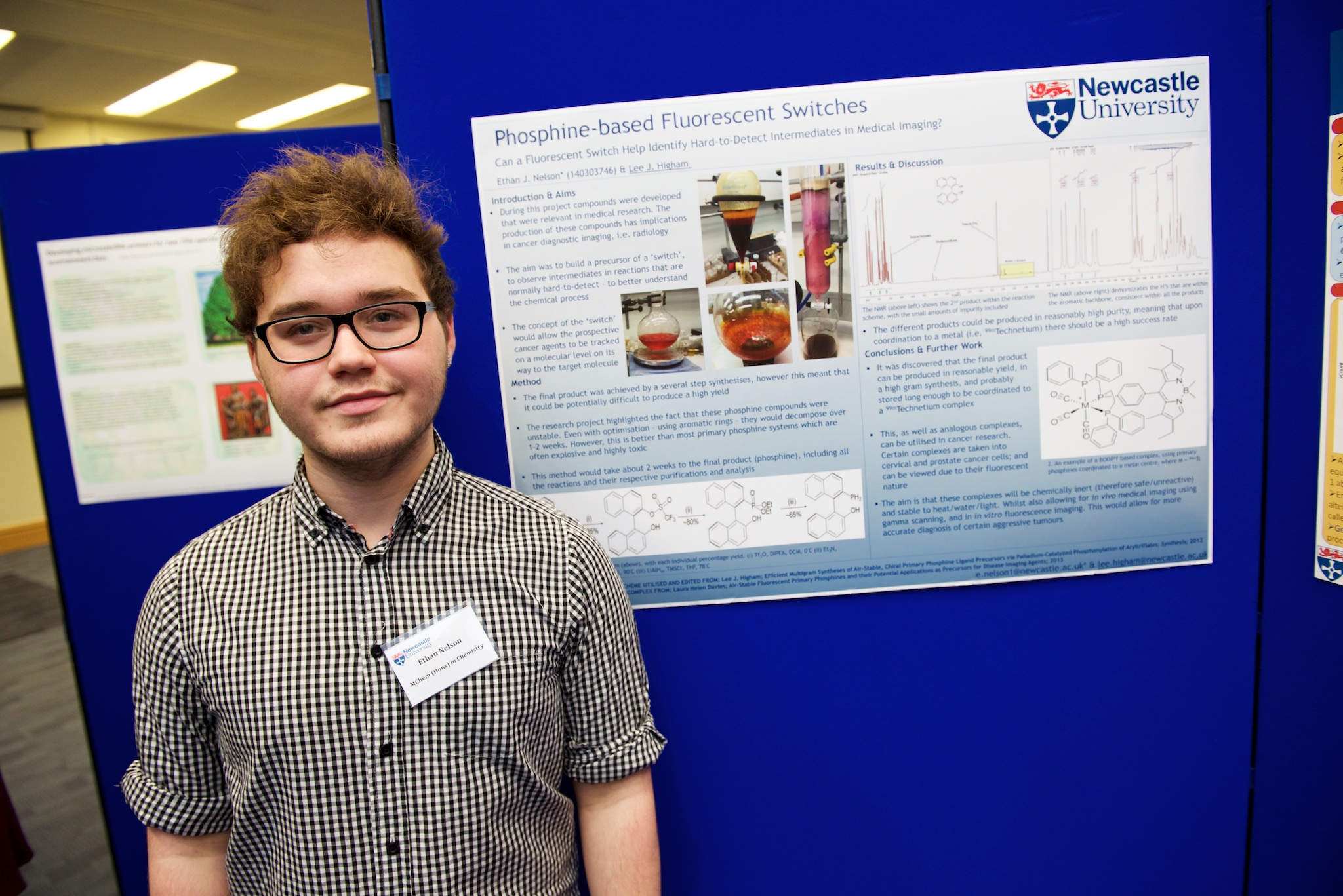2016 Participants
 Ethan Nelson
Ethan Nelson
- Mchem (Hons) Chemistry
- Can A Fluorescent Phosphine Switch Identify Hard-to-Detect Catalytic Intermediates?
The purpose of this project was to develop compounds that were relevant to catalysis and to investigate their photophysical properties (response to UV light). The compounds to be created were to be fluorescent, made up of phosphine-based systems that were often unstable. The production of these compounds has implications in medical research, i.e. in cancer treatment, potentially for use in diagnostic imaging and in-vivo drug delivery. The aim was to build a ‘switch’ to observe intermediates in reactions that are normally hard to detect – to better understand the chemical process. This was done by several step synthesises, however this meant that it was difficult to produce a high yield. The research project revealed that these phosphine compounds were unstable, even with optimisation – using aromatic rings – they would decompose over 1-2 weeks. However, this is better than most primary phosphine systems which are often explosive and highly toxic.
Funding source: Newcastle University
Supervisor: Dr Lee Higham
